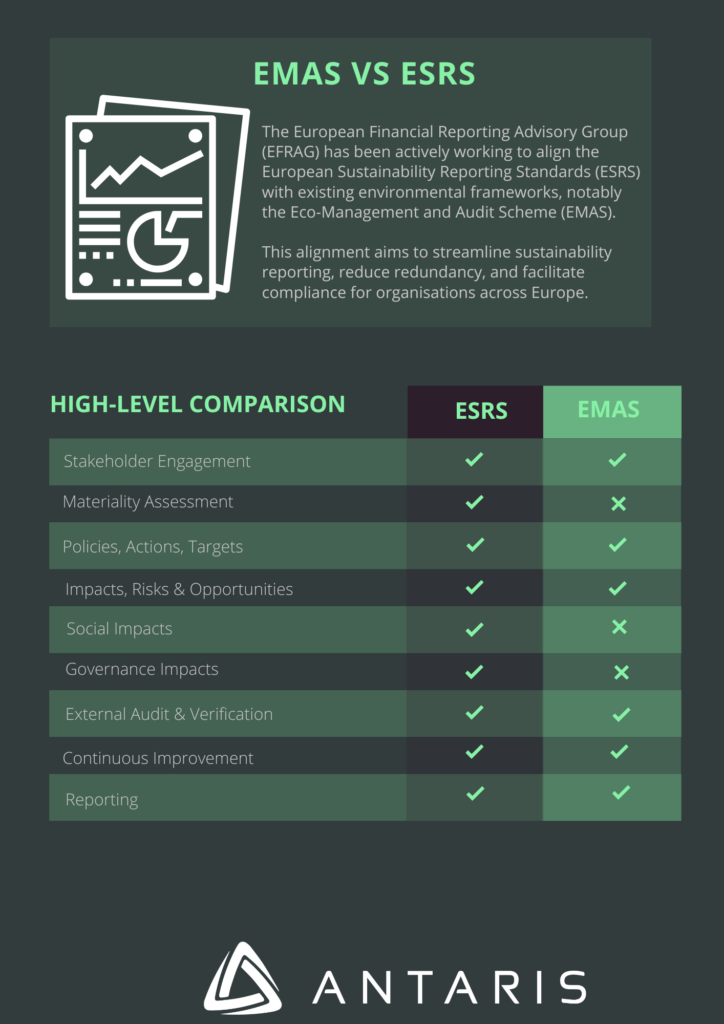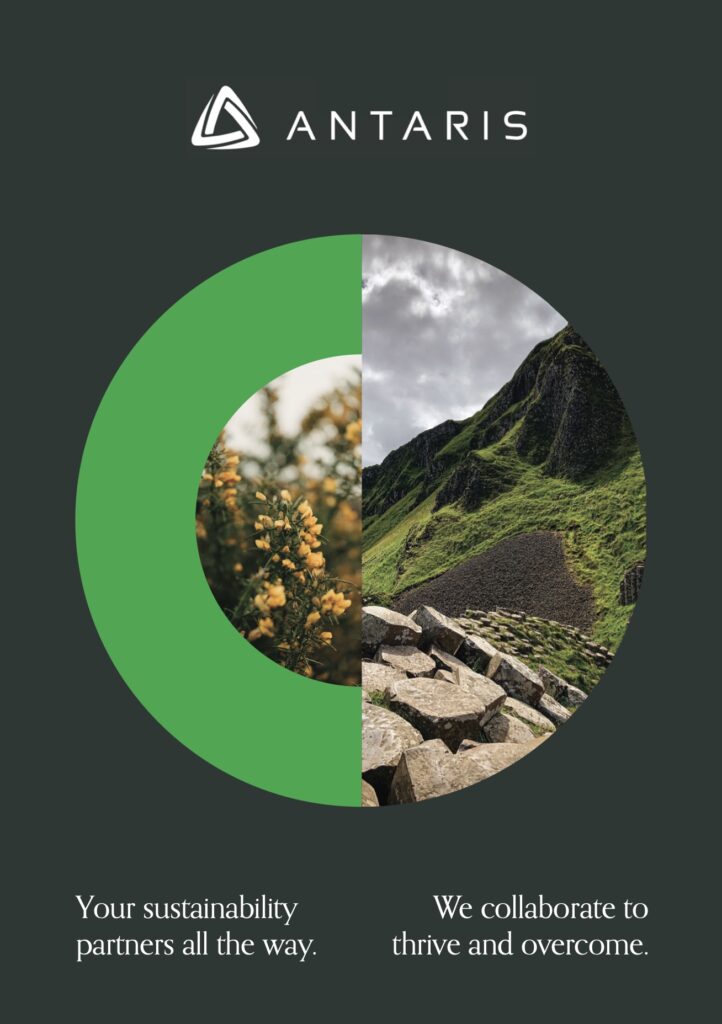The European Financial Reporting Advisory Group (EFRAG) has been actively working to align the European Sustainability Reporting Standards (ESRS) with existing environmental frameworks, notably the Eco-Management and Audit Scheme (EMAS). This alignment aims to streamline sustainability reporting, reduce redundancy, and facilitate compliance for organisations across Europe.
In a paper published last week, EFRAG Secretariat “Understanding the synergies between European Sustainability Reporting Standards (ESRS) and Eco-Management and Audit Scheme (EMAS)”shows that many of the environmental disclosure requirements of the ESRS can be built on data already available within the EMAS framework.
Understanding EMAS and ESRS
EMAS is a voluntary EU initiative designed to improve an organisation’s environmental performance through a robust framework that includes regular reporting, performance evaluation, and employee engagement. On the other hand, ESRS, developed under the Corporate Sustainability Reporting Directive (CSRD), provides a comprehensive set of standards for sustainability reporting, encompassing environmental, social, and governance (ESG) aspects.
Key Synergies Between ESRS and EMAS
The intersection of CSRD and EMAS presents several synergies that organisations can leverage. I have summarised the key alliances here:
- Reporting Requirements: Both frameworks necessitate the preparation of annual reports detailing sustainability performance. EMAS’s environmental statement can serve as a foundational element for the broader sustainability disclosures required by CSRD, particularly concerning environmental aspects.
- Scope of Reporting: EMAS allows for environmental reporting at the site level, which can be consolidated to align with CSRD’s requirement for corporate-level reporting. For organisations with multiple sites, a corporate environmental statement encompassing all locations can streamline compliance with CSRD.
- Stakeholder Engagement: Both CSRD and EMAS emphasise the importance of stakeholder engagement. EMAS mandates open dialogue with the public and active employee involvement, aligning with CSRD’s requirement to disclose how stakeholder interests are considered in business strategies.
- Materiality Assessment: EMAS requires organisations to identify and assess direct and indirect environmental aspects, a process akin to CSRD’s double materiality assessment. This alignment enables organisations to utilise existing EMAS assessments to partially fulfil CSRD requirements. Caution is advised here, however. The materiality assessment required under the CSRD goes beyond environmental impacts and aspects; it addresses social and governance impacts also. Moreover, the CSRD requires a double materiality perspective to address both impact and financial materiality. This is not required under EMAS.
- External Verification: Both frameworks require third-party verification of reported information. Under EMAS, environmental verifiers validate the environmental statement, providing a level of assurance comparable to CSRD’s requirements for limited assurance by statutory auditors or independent assurance service providers.
Leveraging EMAS for CSRD Compliance
Organisations already registered with EMAS are well-positioned to meet CSRD obligations. The structured environmental management system and validated reporting inherent in EMAS provide a robust foundation for the comprehensive sustainability disclosures mandated by CSRD. By integrating EMAS processes with CSRD requirements, companies can achieve several benefits:
- Efficiency: Utilising existing EMAS data and processes reduces duplication of efforts, making the reporting process more efficient.
- Credibility: Externally validated environmental statements under EMAS enhance the credibility of sustainability disclosures, meeting stakeholder expectations for reliable information.
- Continuous Improvement: The cyclical nature of EMAS’s plan-do-check-act approach fosters ongoing enhancement of environmental performance, aligning with CSRD’s emphasis on integrating sustainability into corporate strategy.
Challenges and Considerations
Despite the synergies, organisations must be mindful of certain challenges:
- Broader Scope of CSRD: CSRD encompasses a wider range of ESG factors beyond the environmental focus of EMAS. Organisations will need to develop processes to capture and report on social and governance aspects not covered by EMAS.
- Granularity of Data: CSRD requires more detailed disclosures, including anticipated financial effects of sustainability risks and opportunities. Organisations may need to enhance their data collection and reporting mechanisms to meet these demands.
- Integration Across Functions: Aligning EMAS with CSRD requires collaboration across various departments, including finance, sustainability, and strategy. Establishing cross-functional teams can facilitate this integration.
In conclusion, the synergies between CSRD and EMAS offer a pathway for organisations to enhance their sustainability reporting and performance. By leveraging the structured framework of EMAS, companies are well on the road to meet the comprehensive requirements of the CSRD, thereby contributing to the EU’s overarching sustainability goals. Additionally, at a strategic level, these synergies drive value creation. Organisations leveraging both frameworks can better identify cost savings through improved resource efficiency and streamlined reporting. Furthermore, by aligning EMAS-driven performance metrics with ESRS’s disclosure requirements, companies can uncover gaps and opportunities in their sustainability strategies, creating a feedback loop for continuous improvement. This alignment helps businesses stay ahead of regulatory changes while delivering meaningful environmental and financial outcomes.









